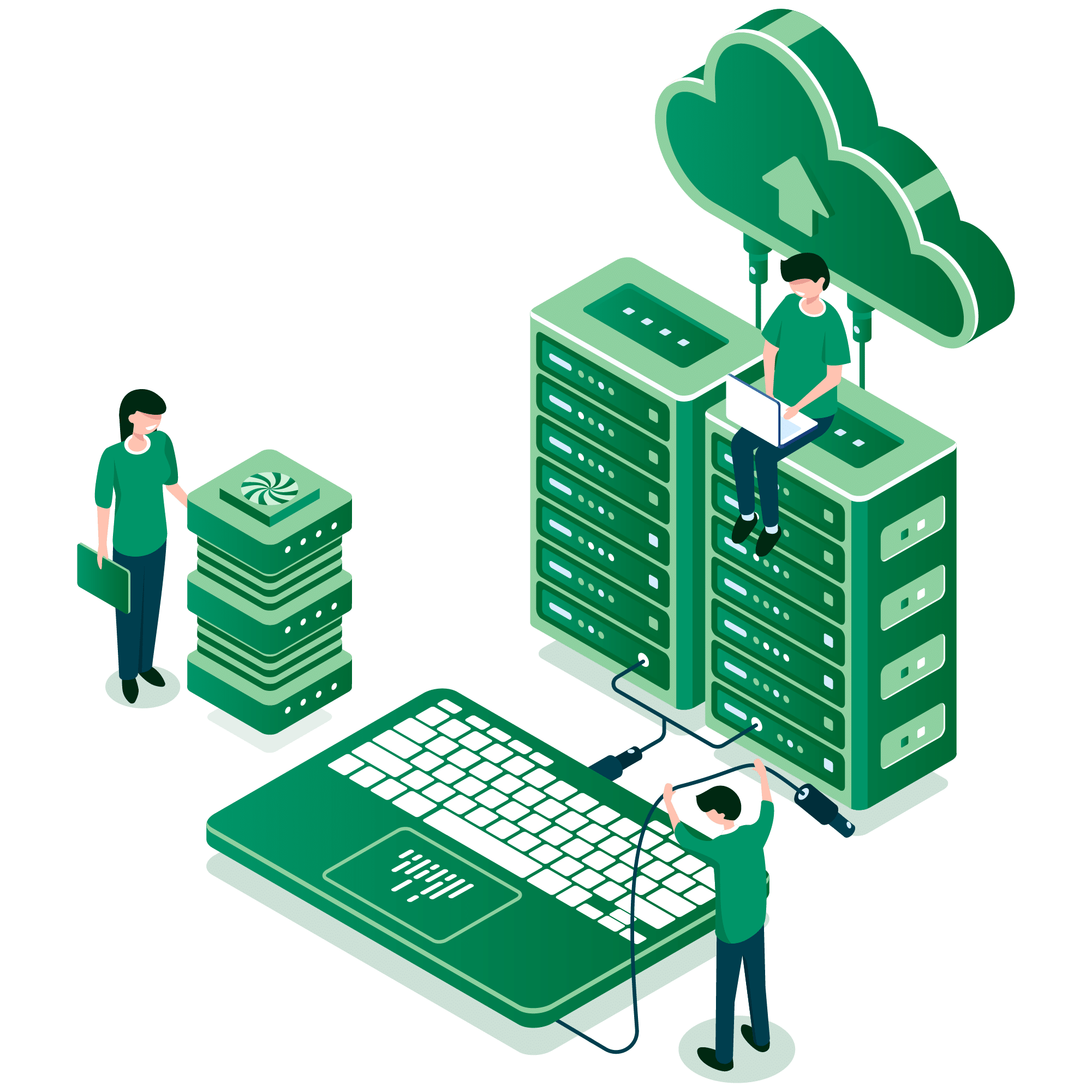Data centers are at the heart of the digital transformation movement. According to recently released data from the global data center market, the sector will increase from USD 3.8 billion in 2020 to USD 5.9 billion in 2025. Businesses have opted to secure their data in remote off-site locations owned by third-party colocation providers. The reason is simple – colocation offers companies access to basic facilities including physical building space, power, cooling, physical security, and telco access for WAN support. However, as a business owner, you might have concerns regarding the services available to maintain your data performance and security once they’re housed elsewhere. As per ITIC’s 2021 Hourly Cost of Downtime survey, a single hour of unplanned downtime costs $300,000 or more for 91 percent of mid-sized enterprises. Remote hands services offer remedies in such situations.
Inner Workings Of Remote Hands Services
Remote hands data center services empower companies to assign IT management and maintenance tasks in a colocation facility to technicians hired by the provider. These are physical services where specialized, always-on-site data center experts maintain servers, cabling, and other owned hardware on your company’s behalf. Remote-hand services can replace or collaborate with staff or outside contractors. It allows customers to use the on-site labor and expertise and ensures that environments are highly optimized, constantly accessible, and robust.
Data center staff can typically provide IT remote hand services including installing new equipment, replacing a failed drive, verifying the state of equipment, or even cycling a server’s power. However, these services may vary depending on the supplier. When it comes to UnitedLayer®, our remote hand services consist of inventory audit, rack installation, cabling and wiring, shipping, and receiving for equipment/inventorying boxes of the data center.
Need To Use Remote Hands
- Minimize downtime threat: There will be engineers on-site for troubleshooting situations like server refreshes or reboots, power supply failures, thermal management, and others. Without remote hands, these instances could affect business revenue and the ability to deliver services to customers. For example, when implementing mission-critical activities from servers in a colocation facility, such as ERP software, CRM software, remote collaboration tools, secure payment processing, or eCommerce websites, a response delay (easily brought on by backed-up traffic) is problematic. With remote hands services, experienced, highly skilled data center engineers are on-site around-the-clock; they can respond quickly when an alert is raised and complete scheduled maintenance on time.
Additionally, a deep understanding of the colocation tenant environments enables remote hands teams to optimize hardware more effectively. A value analysis may reveal that a remote hands service is a lower risk, more affordable way for an organization to maintain server uptime and excellent performance, guaranteeing superior performance all the time.
- Manage colocation budget efficiently: Businesses benefit from a specialized, 24/7 service at a lesser cost by being in a shared building, as opposed to having to pay salaries for a maintenance team or suffering premium emergency call-out contractor expenses.
Your prearranged fee with a colocation provider will cover the costs of maintenance and emergency response. Since colocation tenants continue to be the owners of their own equipment, the only additional costs you will incur when using a remote hands service are those associated with replacement hardware.
- Secure data based on industry regulations: There are many laws and regulations put in place for the technology industry every now and then. One such law is the Health Information Technology for Economic and Clinical Health Act (HITECH) which says that the data must be secured at all costs. This regulation includes – securing and encrypting data at rest, securing and encrypting data in transit, and not using shared hardware and services.
Securing data also entails protecting the hardware that houses the data, essentially caging your servers. Controlling who gets access to the cages and the facility where they are kept is also necessary. Colocated data centers with remote hands services are used to comply with these laws and regulations.
- Give priority to resources: IT departments maintain corporate operations, and as digital transformation develops, they take up a crucial position at the strategic table. Therefore, instead of regular tasks and firefighting, organizations’ technical teams should concentrate on high-value jobs that contribute to sustainability and competitiveness. A company using colocation services can accomplish this by using remote hands services to handle the day-to-day operations and response.
A colocation remote hands service and a resilient and redundant infrastructure are recommended and necessary. Remote workers will decrease downtime for your organization and save you money. They will also free up in-house IT staff members so they can concentrate on managing important projects, optimizing IT operations, and more. This will enable you to offer greater levels of client service.
Choosing The Remote Hands Way
There is more to remote hands services than just a haphazard line item on an order sheet. It might be a useful service financially and in terms of advantages. You can decide what is ideal for your demands and budget using your own analysis. Once everything is documented, your data center maintenance costs will be more than planned. By utilizing your colocation provider’s on-site engineers and technicians, remote hands can provide a method to lower that cost and refocus your own resources.
Not all colocation providers offer remote hands services and even the ones that do will have some limitations. UnitedLayer® fills these gaps making sure that you get access to competent engineering and technical resources anywhere on the globe. We also have a complete set of managed services offering that empowers companies to get their hands off non-strategic operational tasks to our team of skilled engineers. Reach out to us today to learn more about how our remote hands service can fit your business needs.


